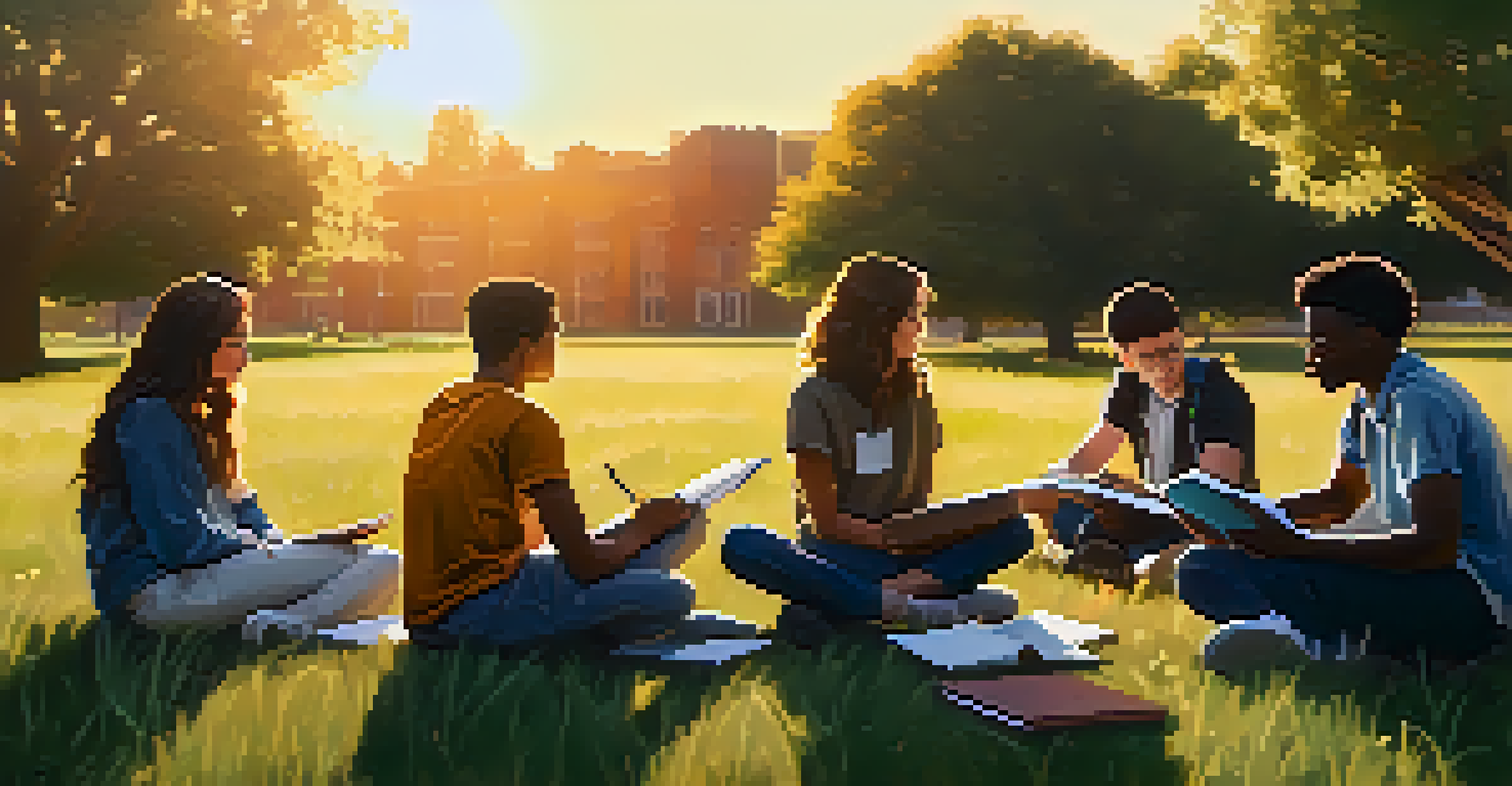The Importance of Critical Reflection in the Learning Process

Understanding Critical Reflection in Learning
Critical reflection is the process of thoughtfully considering the experiences we go through. It involves analyzing our actions, thoughts, and feelings to gain deeper insights into our learning. By engaging in critical reflection, learners can connect theoretical concepts with practical experiences, enhancing their understanding.
We do not learn from experience... we learn from reflecting on experience.
This practice not only helps individuals recognize their strengths and weaknesses but also encourages a growth mindset. For instance, a student who reflects on a challenging project may identify specific areas where they excelled and others that need improvement. This self-awareness is key to personal and academic development.
Moreover, critical reflection fosters a culture of continuous improvement. When learners consistently evaluate their experiences, they become more adaptable and resilient, which are crucial traits in today's fast-paced world. In essence, it transforms learning from a passive activity into an active, engaging process.
The Benefits of Engaging in Critical Reflection
One of the main benefits of critical reflection is increased self-awareness. By taking time to reflect, learners can better understand their emotions, motivations, and thought processes. This self-awareness allows individuals to make more informed choices in their learning journey.

Another significant advantage is improved problem-solving skills. When learners reflect on past challenges, they can identify effective strategies and approaches that worked well. This not only boosts their confidence but also equips them with tools to tackle future obstacles more effectively.
Critical Reflection Enhances Learning
Engaging in critical reflection connects theoretical concepts to practical experiences, fostering deeper understanding.
Lastly, critical reflection enhances collaboration and communication skills. By sharing reflections with peers or mentors, individuals can gain diverse perspectives and feedback. This exchange of ideas enriches the learning experience and fosters a supportive learning environment.
How to Practice Critical Reflection Effectively
Practicing critical reflection can be as simple as keeping a learning journal. By jotting down thoughts and feelings after completing a task or project, learners can track their progress over time. This written record serves as a powerful tool for analysis and growth.
Reflection is one of the most important tools for learning. It allows us to take what we know and make it our own.
Another effective method is engaging in guided reflection sessions, either individually or in groups. These sessions can include prompts or questions that encourage deeper thinking about experiences. For instance, asking 'What did I learn from this experience?' can lead to profound insights.
Additionally, seeking feedback from others can enhance the reflection process. By discussing experiences with peers or mentors, learners can uncover new perspectives and alternative solutions to challenges. This collaborative aspect makes reflection not only personal but also communal.
Creating a Reflective Learning Environment
A reflective learning environment is one where individuals feel safe to express their thoughts and feelings. This atmosphere encourages open dialogue and vulnerability, allowing learners to share their reflections without fear of judgment. Creating such an environment starts with establishing trust among participants.
Incorporating regular reflection activities into the learning process is also essential. For example, educators can implement weekly reflection sessions where students discuss their insights and challenges. This routine not only reinforces the practice of reflection but also helps students learn from each other's experiences.
Self-Awareness Boosts Growth Mindset
Through reflection, learners gain insights into their strengths and weaknesses, promoting personal and academic development.
Lastly, providing resources and tools for reflection can significantly enhance the learning environment. Whether it's through workshops, online platforms, or reading materials, equipping learners with the right tools fosters a culture of reflection and continuous improvement.
Overcoming Barriers to Critical Reflection
Despite its benefits, many learners face barriers to engaging in critical reflection. One common challenge is time constraints, as busy schedules often leave little room for introspection. To combat this, learners can dedicate just a few minutes each day to reflect, making it a manageable part of their routine.
Another barrier is the fear of uncovering negative emotions or experiences. However, it's important to remember that reflection is a safe space for growth. Embracing discomfort can lead to valuable insights, and learners should be encouraged to view challenges as opportunities for development.
Lastly, a lack of guidance can hinder effective reflection. Providing structured frameworks or prompts can help learners navigate their reflective practice more confidently. With the right support, they can transform their reflections into actionable steps for personal and academic growth.
The Role of Educators in Fostering Reflection
Educators play a crucial role in promoting critical reflection among their students. By modeling reflective practices themselves, teachers can demonstrate the importance of this process. Sharing personal reflections can inspire students to engage in their own reflective journeys.
Moreover, educators can create assignments that explicitly require reflection. For example, asking students to submit a reflective essay after a project encourages them to think critically about their learning. This not only reinforces the habit of reflection but also helps students articulate their thoughts.
Educators Foster Reflective Practices
Teachers can encourage critical reflection by modeling practices, assigning reflective tasks, and providing constructive feedback.
Finally, providing feedback on reflective exercises is essential. Educators can guide students in identifying key insights and areas for improvement. This constructive feedback not only enhances the learning experience but also shows students that their reflections are valued.
The Long-term Impact of Critical Reflection on Learning
The long-term impact of critical reflection is profound, shaping not only individual learning but also broader educational practices. As learners become adept at reflecting, they develop lifelong learning skills that continue beyond formal education. This ability to adapt and grow is invaluable in both personal and professional settings.
Furthermore, organizations that prioritize reflective practices often see enhanced team dynamics and innovation. When team members engage in collective reflection, they can identify areas for improvement and foster a culture of collaboration. This not only improves workplace morale but also drives better results.

In conclusion, the practice of critical reflection cultivates a mindset of continuous growth, leading to more effective learning experiences. It's a vital skill that empowers individuals to navigate their learning journeys with confidence and clarity, ultimately paving the way for future success.